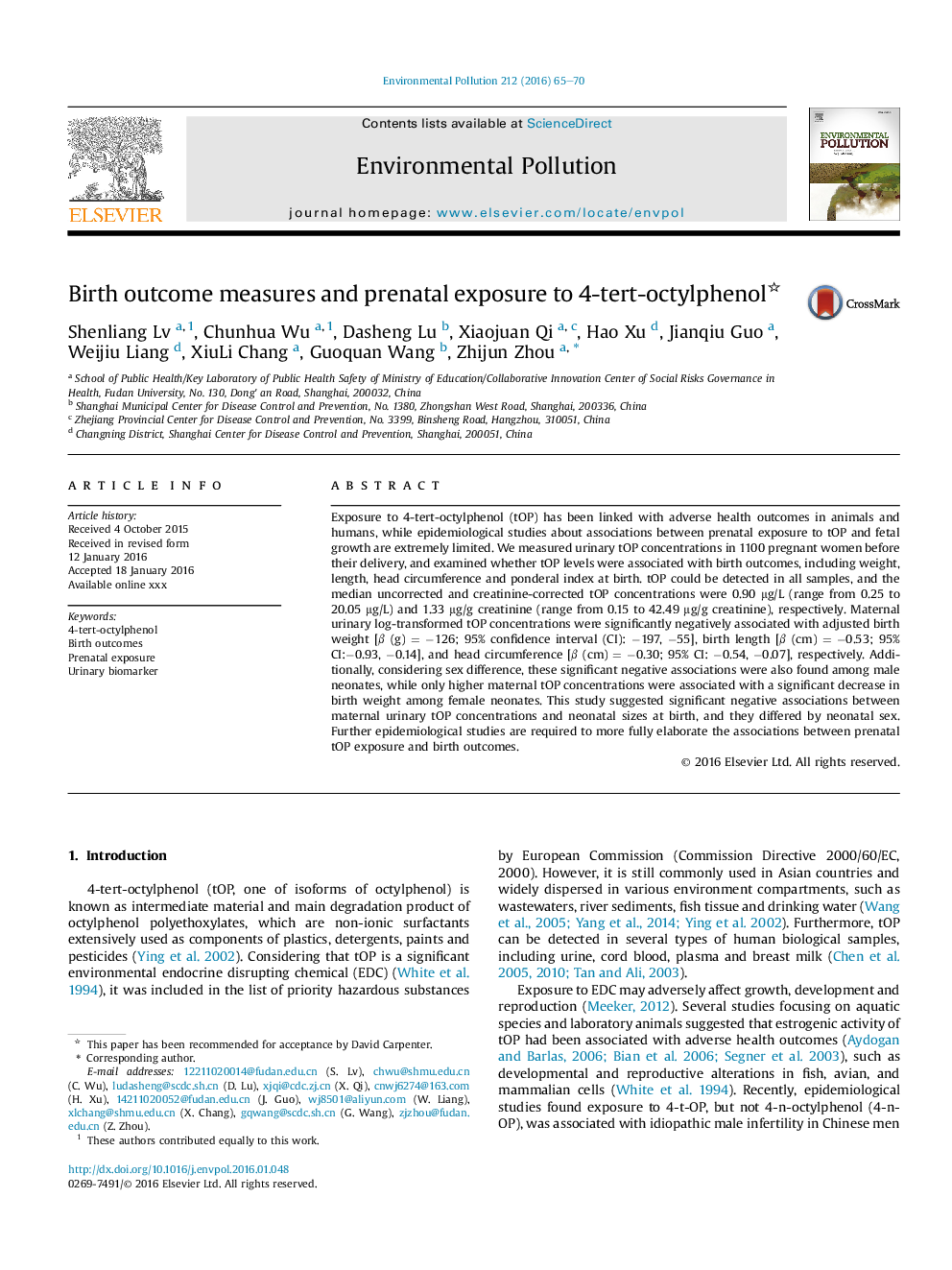| Article ID | Journal | Published Year | Pages | File Type |
|---|---|---|---|---|
| 6315589 | Environmental Pollution | 2016 | 6 Pages |
Abstract
Exposure to 4-tert-octylphenol (tOP) has been linked with adverse health outcomes in animals and humans, while epidemiological studies about associations between prenatal exposure to tOP and fetal growth are extremely limited. We measured urinary tOP concentrations in 1100 pregnant women before their delivery, and examined whether tOP levels were associated with birth outcomes, including weight, length, head circumference and ponderal index at birth. tOP could be detected in all samples, and the median uncorrected and creatinine-corrected tOP concentrations were 0.90 μg/L (range from 0.25 to 20.05 μg/L) and 1.33 μg/g creatinine (range from 0.15 to 42.49 μg/g creatinine), respectively. Maternal urinary log-transformed tOP concentrations were significantly negatively associated with adjusted birth weight [β (g) = â126; 95% confidence interval (CI): â197, â55], birth length [β (cm) = â0.53; 95% CI:â0.93, â0.14], and head circumference [β (cm) = â0.30; 95% CI: â0.54, â0.07], respectively. Additionally, considering sex difference, these significant negative associations were also found among male neonates, while only higher maternal tOP concentrations were associated with a significant decrease in birth weight among female neonates. This study suggested significant negative associations between maternal urinary tOP concentrations and neonatal sizes at birth, and they differed by neonatal sex. Further epidemiological studies are required to more fully elaborate the associations between prenatal tOP exposure and birth outcomes.
Related Topics
Life Sciences
Environmental Science
Environmental Chemistry
Authors
Shenliang Lv, Chunhua Wu, Dasheng Lu, Xiaojuan Qi, Hao Xu, Jianqiu Guo, Weijiu Liang, XiuLi Chang, Guoquan Wang, Zhijun Zhou,
